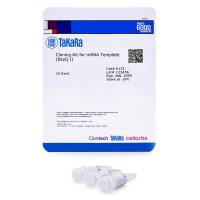Site-Directed Mutagenesis Using a Double-Stranded DNA Template
互联网
640
It is now technically possible to create almost any desired mutation in a given DNA sequence. So called site-directed mutagenesis allows the introduction of designed mutations into specific locations. This approach is invaluable for studying gene regulation as well as for functional assessment of proteins and their interactions. Several protocols have been successfully employed to generate such mutants. Here I describe a “linker-scanning” method that I have used to systematically mutate the murine Major Histocompatibility Complex (MHC) class II Eα gene promotor (Fig. 1 , ref. 1 ).


Fig.1. Linker-scanning mutation of the Eα promoter The sequence of each of the 10-bp linker-scanning mutations (numbered 1–20) is shown under the wild-type Eα promoter sequence Class II regulatory motifs are underlined or boxed (reproduced from ref 1).








